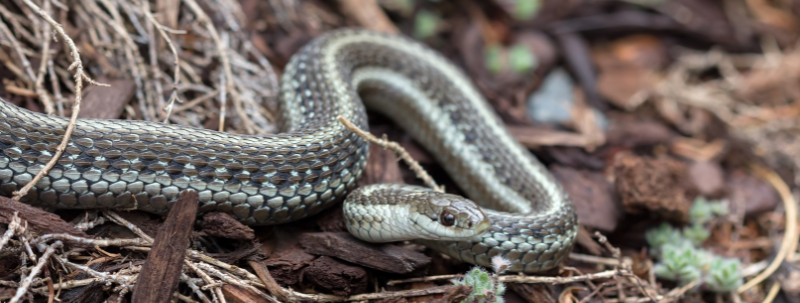
Celebrating World Snake Day and Exploring the Native Snakes of the Clackamas Watershed
World Snake Day is July 16th! While we were writing this blog post we came across some hilarious terms for snakes. Have you heard them referred to as danger noodles, regretti spaghetti, nope ropes, sneaky sneks, or slither straws??
In all seriousness though, our native snakes are essential to keeping our ecosystem balanced and thriving.
Snakes play crucial roles in our ecosystem, contributing to its overall health and balance. In this blog post, we’ll introduce you to some of the native snakes in the Clackamas Watershed, discuss the presence of any invasive species, and highlight the many benefits that native snakes provide.
Native Snakes of the Clackamas Watershed
Northwestern Garter Snake (Thamnophis ordinoides)
The Northwestern Garter Snake is one of the most commonly encountered snakes in the Clackamas area. These small, colorful snakes are non-venomous and primarily feed on small invertebrates, including slugs, earthworms, and amphibians. Their vibrant stripes make them easily recognizable as they slither through gardens and forests.
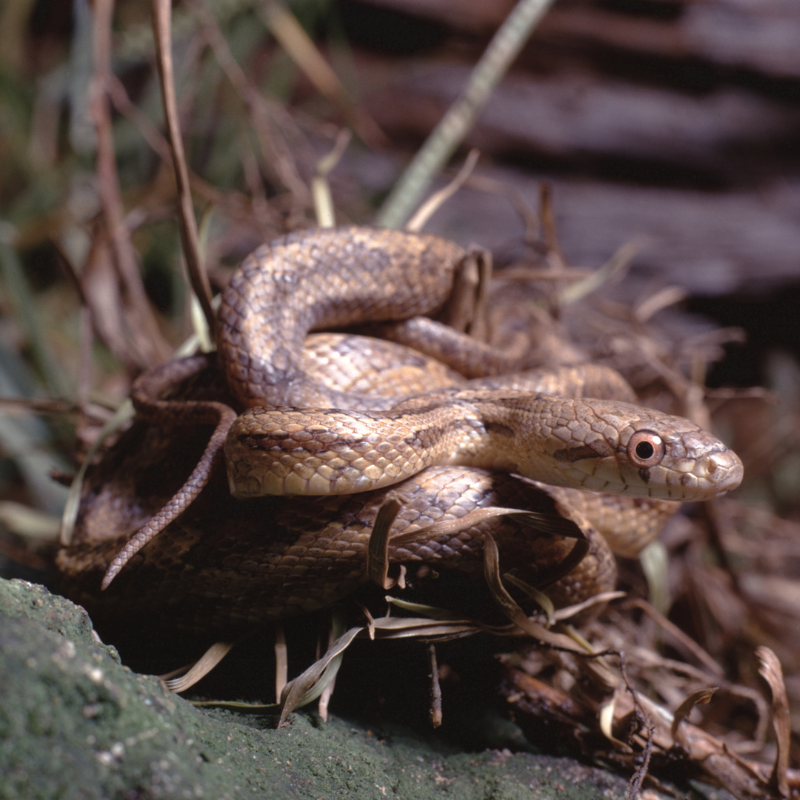
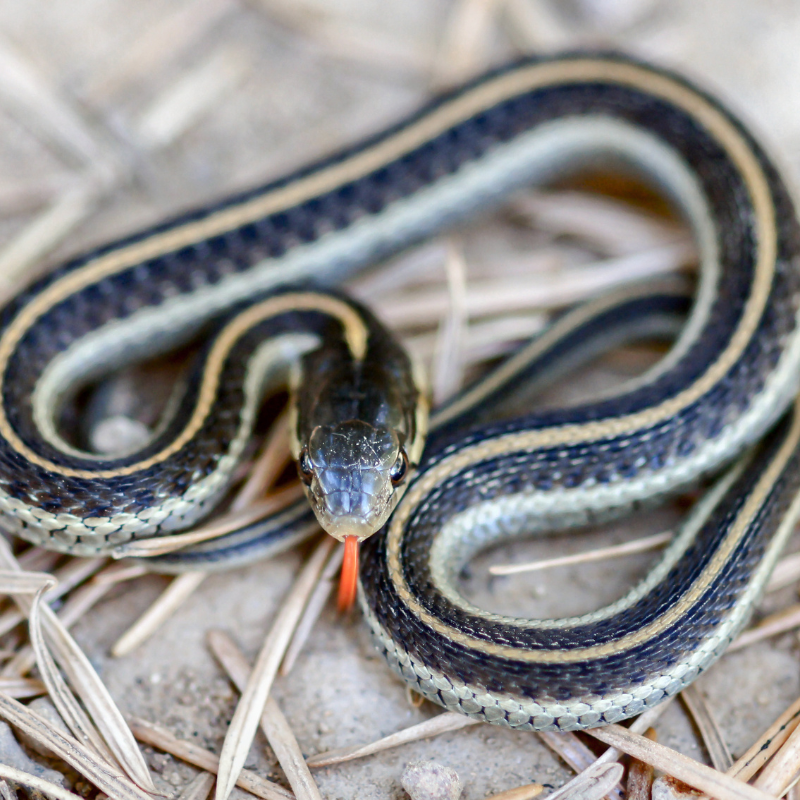
Western Terrestrial Garter Snake (Thamnophis elegans)
The Western Terrestrial Garter Snake is a versatile species that can thrive in a variety of habitats, from grasslands to forests to lake or stream margins. They are proficient hunters, preying on amphibians, small rodents, and insects. These snakes play a crucial role in controlling pest populations, contributing to a balanced ecosystem.
Common Garter Snake (Thamnophis sirtalis)
Another widespread species, the Common Garter Snake, can be found near water sources such as ponds, streams, and wetlands. These adaptable snakes feed on a varied diet, including fish, amphibians, and small mammals. They are known for their distinctive three-striped white pattern running down their bodies. Photo by Dave Budeau, ODFW.
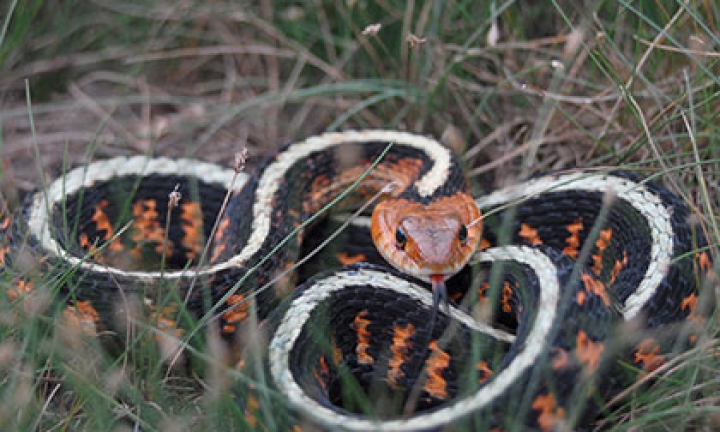

Ring-necked Snake (Diadophis punctatus)
Ring-necked Snakes are small and secretive, often hiding under logs and rocks. They are easily identified by the characteristic yellow ring around their neck. These nocturnal hunters feed primarily on small amphibians and insects. Their shy nature and preference for hiding make them less commonly seen than other species.
Pacific Gopher Snake (Pituophis catenifer catenifer)
The Pacific Gopher Snake is a larger, non-venomous species known for its impressive size and patterns that mimic those of venomous rattlesnakes. These snakes help control rodent populations, making them valuable allies for farmers and gardeners.
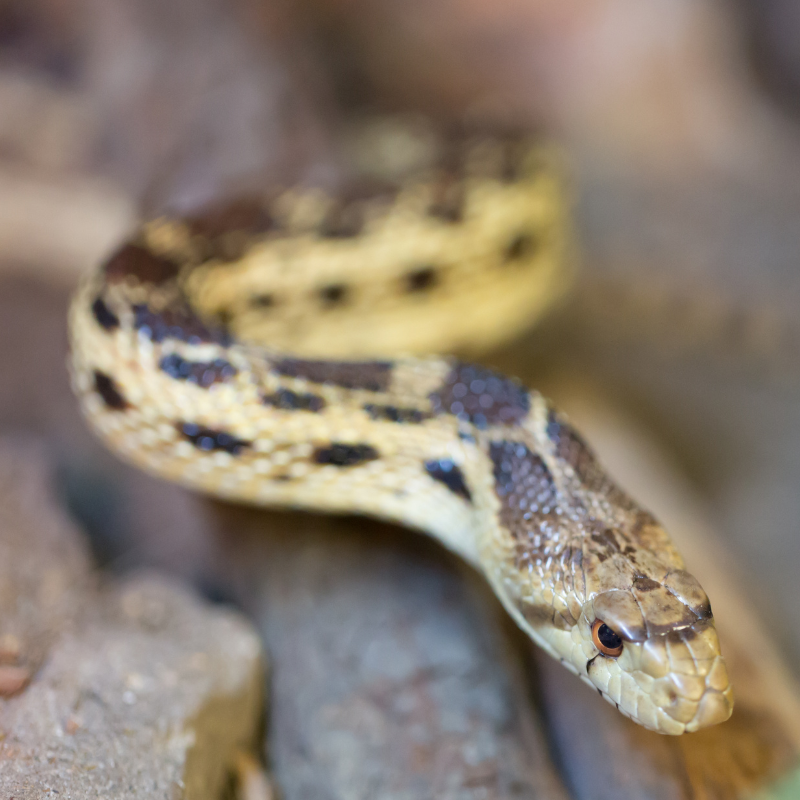
Invasive Snakes in the Clackamas Watershed
As of now, there are no known invasive snake species in the Clackamas Watershed. However, it’s important to remain vigilant and report any unusual sightings to local wildlife authorities to prevent potential invasions.
Benefits of Native Snakes
- Pest Control: Native snakes play a significant role in controlling populations of pests, such as rodents and insects, which can damage crops and spread diseases. By keeping these populations in check, snakes contribute to a healthier and more balanced ecosystem.
- Biodiversity: Snakes are an integral part of the food web, serving as both predators and prey. Their presence supports a diverse range of species, from the animals they hunt to the predators that feed on them.
- Indicator Species: Snakes can serve as indicators of environmental health. A thriving snake population often reflects a healthy, well-functioning ecosystem, while a declining population can signal ecological issues that need to be addressed.
- Natural Pest Management: By controlling rodent populations, snakes help reduce the need for chemical pest control methods, promoting a more sustainable approach to managing agricultural and garden pests.
How You Can Help
- Respect Their Space: If you encounter a snake in the wild, observe from a distance and avoid disturbing it. Snakes are generally non-aggressive and will not harm humans if left alone.
- Create Habitat: Encourage snake-friendly environments by maintaining natural vegetation, rock piles, and logs in your garden or property.
- Educate Others: Share information about the benefits of snakes with your community to help dispel myths and promote coexistence.
- Report Sightings: If you spot an unusual or non-native snake, report it to local wildlife authorities to help monitor and protect native populations.
Conclusion
Snakes are fascinating and essential members of the Clackamas Watershed ecosystem. By understanding and appreciating the roles they play, we can foster a greater sense of stewardship for these remarkable creatures. Let’s celebrate and protect our native snakes, ensuring they continue to thrive in our beautiful watershed.
For more information on local wildlife and how to get involved in conservation efforts, visit the Clackamas River Basin Council website or contact us directly. Together, we can make a difference.
Happy exploring from the Clackamas River Basin Council!